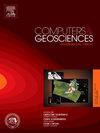Enhanced lithological mapping in arid crystalline regions using explainable AI and multi-spectral remote sensing data
IF 4.2
2区 地球科学
Q1 COMPUTER SCIENCE, INTERDISCIPLINARY APPLICATIONS
引用次数: 0
Abstract
Lithological classification is essential for understanding the spatial distribution of rocks, especially in arid crystalline areas. Artificial intelligence (AI) recent advancements with multi-spectral satellite imagery have been utilized to enhance lithological mapping in these areas. Here we employed different AI models namely, Support Vector Machine (SVM), Random Forest Classification (RFC), Logistic Regression, XGBoost, and K-nearest neighbors (KNN) for lithological mapping. This was followed by the application of explainable AI (XAI) for lithological discrimination (LD) which is still not widely explored. Based on the highest accuracy and F1 score of the previously mentioned models, RFC model outperformed all of them, and hence, it was integrated with XAI, using the SHapley Additive exPlanations (SHAP) method.
This approach successfully identified critical multi-spectral features for LD in arid crystalline zones when applied on the Landsat-8, Advanced Spaceborne Thermal Emission and Reflection Radiometer (ASTER), and SRTM-DEM datasets covering the Hammash and the Wadi Fatimah areas in Egypt and the Kingdom of Saudi Arabia, respectively. Field validation in the Hammash area confirmed the RFC model's efficacy, achieving a satisfactory 94% overall accuracy for 18 features. SHAP was able to identify the top ten features for proper LD over the Hammash area with 90.3% accuracy despite the complex nature of the ophiolitic mélange. For validation purposes, RCF was then utilized in the Wadi Fatimah region, using only the top 10 critical features rendered from the SHAP analysis. It performed well and had 93% accuracy. Notably, XAI/SHAP results indicated that elevation data, Landsat-8's Green Band (B3), and the two ASTER SWIR bands (B5 and B6) were essential and significant for identifying island arc rocks. Moreover, the SHAP model effectively delineated complex mélange matrices, primarily using ASTER SWIR band (B8). Our findings highlight the successful combination of RFC with XAI for LD and its potential utilization in similar arid crystalline environments worldwide.
利用可解释人工智能和多光谱遥感数据加强干旱结晶地区的岩性测绘
岩性分类对于了解岩石的空间分布至关重要,尤其是在干旱的结晶地区。人工智能(AI)与多光谱卫星图像的最新进展已被用于加强这些地区的岩性绘图。在此,我们采用了不同的人工智能模型,即支持向量机(SVM)、随机森林分类(RFC)、逻辑回归(Logistic Regression)、XGBoost 和 K-nearest neighbors(KNN)来绘制岩性图。其次是应用可解释人工智能(XAI)进行岩性判别(LD),这种方法目前仍未得到广泛探索。这种方法应用于分别覆盖埃及哈马什和沙特阿拉伯王国 Wadi Fatimah 地区的 Landsat-8、高级星载热发射和反射辐射计(ASTER)以及 SRTM-DEM 数据集时,成功识别了干旱结晶区岩性判别的关键多光谱特征。在哈马什地区进行的实地验证证实了 RFC 模型的有效性,18 个地物的总体准确率达到 94%,令人满意。尽管蛇绿混杂岩的性质复杂,但 SHAP 能够以 90.3% 的准确率识别出哈马什地区适当 LD 的前十个特征。为了进行验证,我们在 Wadi Fatimah 地区使用了 RCF,仅使用了 SHAP 分析得出的前 10 个关键特征。该方法表现良好,准确率达到 93%。值得注意的是,XAI/SHAP 的结果表明,高程数据、Landsat-8 的绿波段(B3)和两个 ASTER SWIR 波段(B5 和 B6)对于识别岛弧岩石至关重要。此外,SHAP 模型主要利用 ASTER SWIR 波段(B8)有效地划分了复杂的混杂岩矩阵。我们的研究结果突显了 RFC 与 XAI 在 LD 方面的成功结合及其在全球类似干旱结晶环境中的潜在应用。
本文章由计算机程序翻译,如有差异,请以英文原文为准。
求助全文
约1分钟内获得全文
求助全文
来源期刊

Computers & Geosciences
地学-地球科学综合
CiteScore
9.30
自引率
6.80%
发文量
164
审稿时长
3.4 months
期刊介绍:
Computers & Geosciences publishes high impact, original research at the interface between Computer Sciences and Geosciences. Publications should apply modern computer science paradigms, whether computational or informatics-based, to address problems in the geosciences.
 求助内容:
求助内容: 应助结果提醒方式:
应助结果提醒方式:


